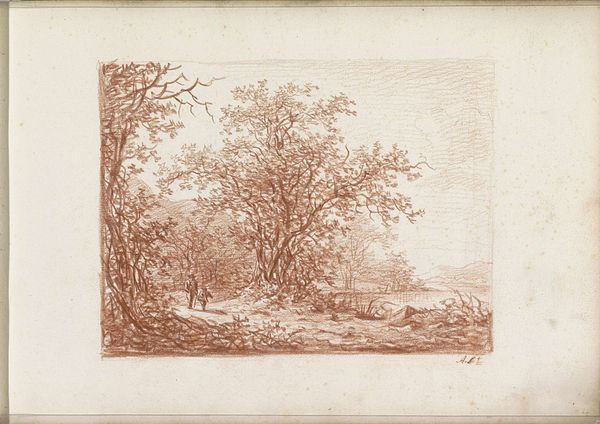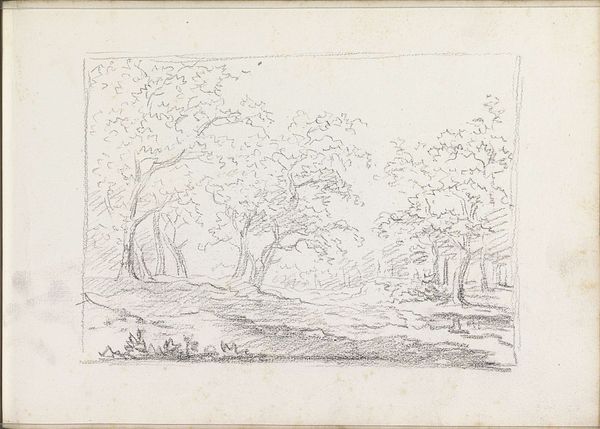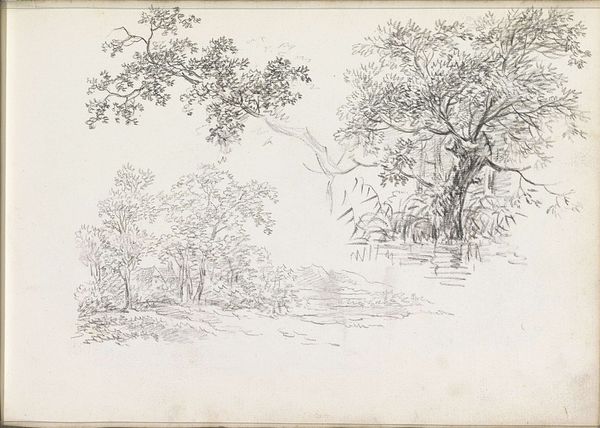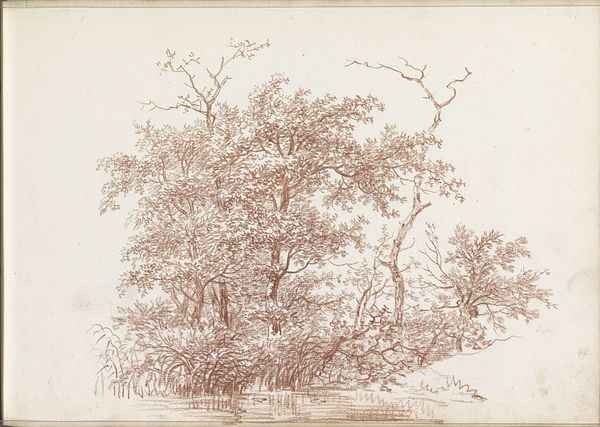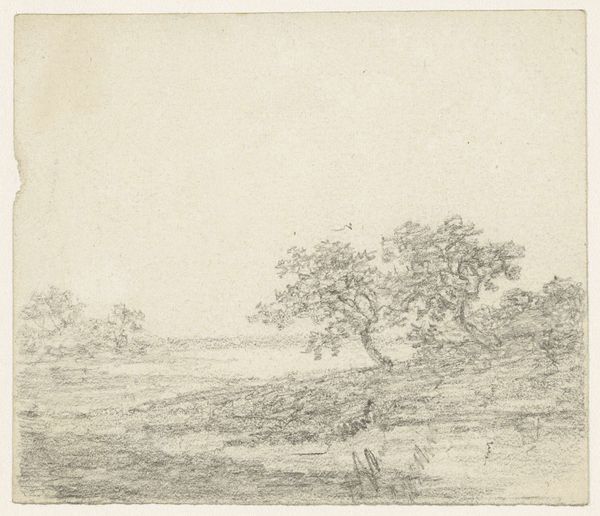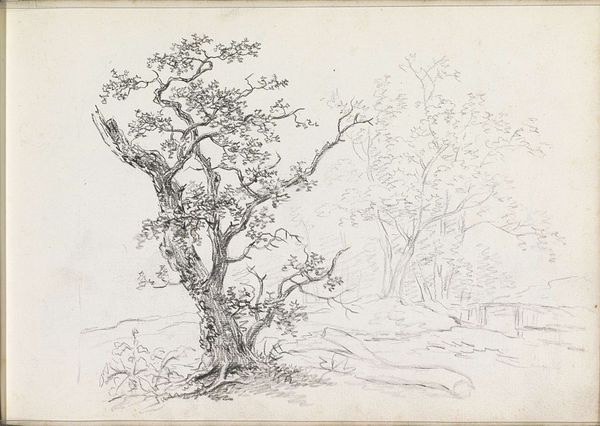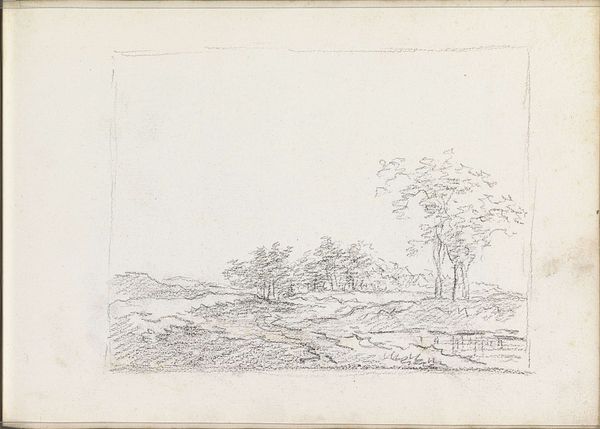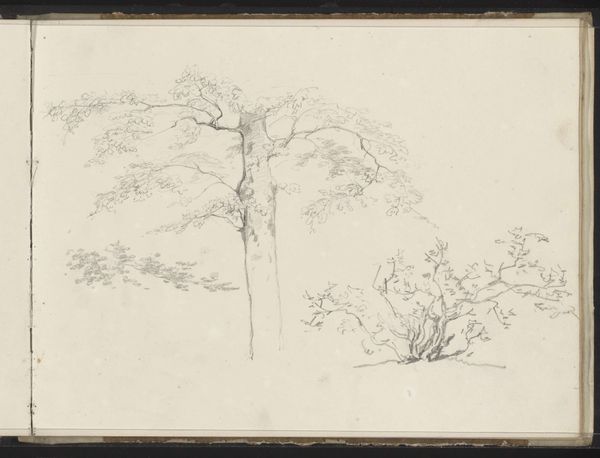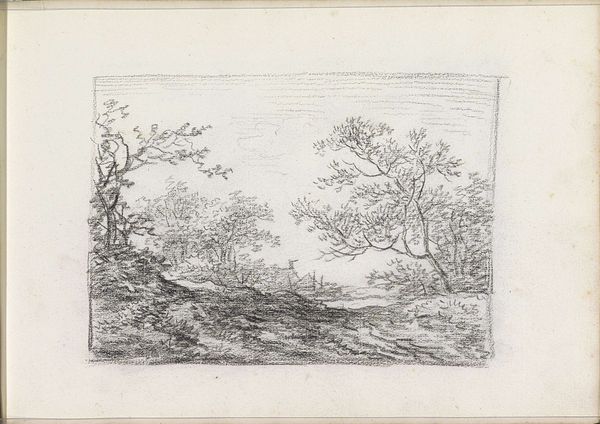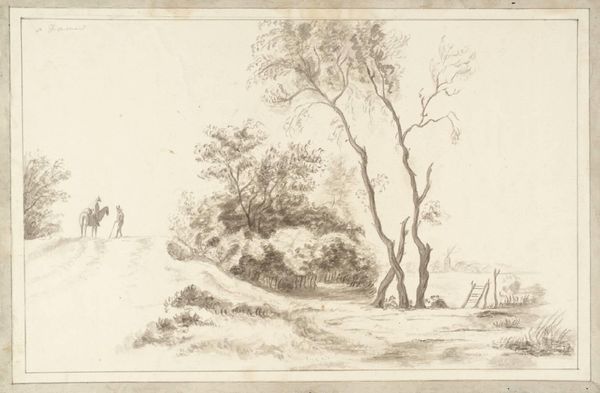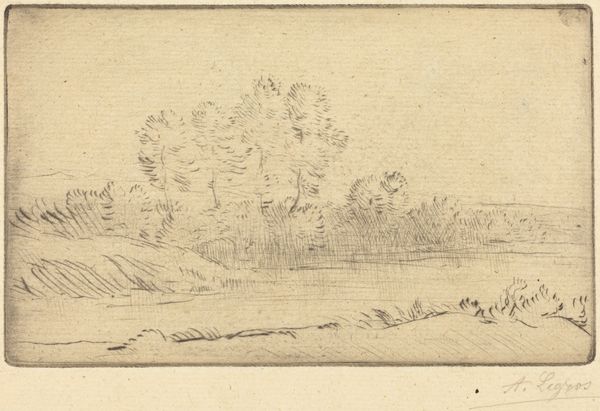
drawing, ink
#
drawing
#
pen sketch
#
landscape
#
ink
#
romanticism
Copyright: Rijks Museum: Open Domain
Editor: So this is "Omheind weiland naast een bomengroep," or "Fenced meadow next to a group of trees," a pen and ink drawing by Andreas Schelfhout, from around 1811. It's so delicate. I’m curious – what story do you think the materials tell in this piece? Curator: Well, think about the availability of paper and ink at this time, and for whom these materials would have been accessible. This isn't about some grand statement, but perhaps about capturing a specific landscape tied to land ownership. That humble fence, rendered in the same ink as the seemingly “natural” trees… does that disrupt the typical romanticism tag we often see attached to these scenes? Editor: That's interesting. It shifts my perspective completely. I initially saw a simple landscape, but you're highlighting the socioeconomic aspect tied to its creation and the way nature is being commodified here. Curator: Precisely! The controlled, almost industrial quality of the marks that form the foliage, mimicking textures. Consider also the *time* involved in this repetitive mark-making, suggesting labor not just in the *subject* of the drawing but *within* the act of its production. The way ink and paper intersect allows the artist to both conceal and reveal economic relationships in what might appear like a harmless scene. Editor: So, the seemingly simple act of sketching with pen and ink becomes a loaded commentary on land, labor, and resources? Curator: Absolutely. The materials and techniques used in this drawing open a window into the social and economic conditions of Schelfhout’s time. Even Romanticism, here, is materially produced and thus intrinsically related to processes of ownership. Editor: I'll never look at a landscape drawing the same way again. Thanks, that’s fascinating! Curator: My pleasure! Examining art through its materiality opens up many overlooked layers of understanding.
Comments
No comments
Be the first to comment and join the conversation on the ultimate creative platform.
